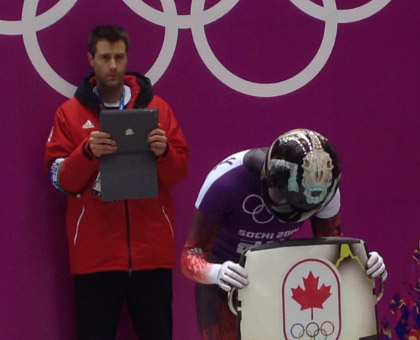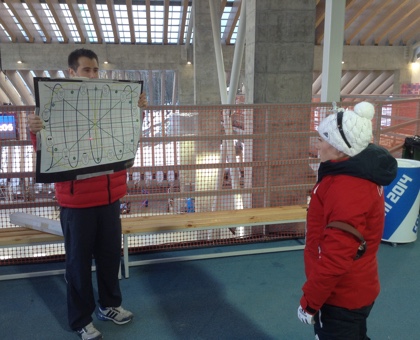Services
- Acute Injury Management and Treatment
- Movement Screening and Functional Assessments
- Performance Enhancement Therapy and Injury Prevention
- NeuroKinetic Therapy (NKT)
- Diagnostic Imaging Referral
- Concussion Baseline Assessment
- Communication to Other Providers
Acute Injury Management and Treatment
After an acute injury, Tyson believes it is important to initiate treatment right away to manage swelling and pain, protect the injured area (bracing, taping, splint, etc), and start to address compensatory patterns and potential issues that may have lead to the injury. It is also important to address compensation patterns and muscle imbalances to prevent an injury to another area. When rehabbing an injury the goal is to get the client/athlete back to normal activities/training as quickly as possible (while respecting healing times), enhance performance, increase durability, and try to reduce the chance of reoccurrence of the injury.
Movement Screening and Functional Assessments
Tyson believes that moving in an efficient and optimal pattern leads to peak performances and reduction in the potential for injuries. Movement screening and functional assessments are modified and designed for each individual person based on the specific motions and movements, type of sports, and activities.
Movement screening may include: Selective Functional Movement Assessment (SFMA)
The Selective Functional Movement Assessment (SFMA) is a series of 11 full-body movement tests designed to assess patients with musculoskeletal pain in patterns of movement such as bending, rotating, and squatting. This type of assessment guides Tyson to the most dysfunctional non-painful movement pattern, which is then assessed in detail. This approach is designed to complement the existing physiotherapy assessment and serve as a model to efficiently integrate the concepts of muscle balance, mobility, stability, and the fundamental patterns of movement into the treatment plan. www.sfma.com
Performance Enhancement Therapy and Injury Prevention
Tyson has a passion working with athletes and active people ("weekend warriors") to help each person reach their peak performances and prevent injury.
Within performance enhancement and injury prevention treatments, the goals include:
- Movement efficiency
- Optimal muscle activation and recruitment patterns (timing and proper order of the firing of muscles)
- Durability and adaptability to various demands, movements, and loads on the body
NeuroKinetic Therapy (NKT)
NeuroKinetic Therapy is a sophisticated assessment and treatment modality that addresses the causes of dysfunctional and movement/coordination problems at their root in the motor control center in the brain/cerebellum. The motor control center of the brain stores these patterns and directs their completion through the spinal cord and the muscles. NKT finds and corrects improper movement patterns that your body performs which is causing your specific pain and dysfunction.
Diagnostic Imaging Referral
As a result of completing advanced certification, Tyson has the capacity to be able to order diagnostic imaging (ultrasound, MRI, X-ray) as needed for his patients.
Concussion Baseline Assessment
Importance of Baseline concussion testing:
- Establish a baseline profile and score at start of a sport season
- Important to collect and compare pre and post injury results to assist in management and return decisions to school/work and activity/sport
- Understand that each concussion is unique
A concussion baseline assessment includes:
Review of past concussion history (including predisposing factors such as headaches and dizziness)
In youth hockey players, reporting neck pain or headache at baseline assessment was associated with an increased risk of concussion during the season. Baseline testing may aid in identifying individuals at an increased risk of concussion and facilitate development of an injury prevention program. Schneider, K, et al. Clinical Journal of Sports Medicine. 2013 (23)ImPACT Baseline neuropsychological testing utilizing a web-based system.
The ImPACT Test is (from www.impacttest.com):
- One important piece of the overall concussion evaluation and management process.
- A sophisticated test of cognitive abilities.
- The most scientifically researched concussion management tool.
- A tool that can help health care professionals track recovery of cognitive processes following concussion.
- A tool to help communicate post-concussion status to athletes, coaches, parents, clinicians.
- A tool that helps health care professionals and educators make decisions about academic needs following concussion.
Baseline Sport Concussion Assessment Tool
The SCAT3 and the Child SCAT3 is a standardized tool for evaluating a patient for a concussion and is designed for use by medical professionals.
SCAT3: 13 years and older
Child SCAT3: ages 5-12 years old
Communication to Other Providers
Tyson knows the importance of communication between different providers involved with a patient. As a result, he tries to liaise and communicate with the patient’s health care and service providers (i.e. doctors, , athletic therapists, chiropractors, osteopaths, massage therapists, strength coaches/personal trainers, and pilates instructors).
-

Services
Acute Injury Management and Treatment, Movement Screening & Functional Assessments, Performance Enhancement Therapy & Injury Prevention, NeuroKinetic Therapy (NKT)...
Read more -

Treatment Techniques
Intramuscular Stimulation (IMS), Fascial Release, Acupuncture, Instrument Assisted Soft Tissue Mobilization (IASTM) & Joint Mobilizations & Manipulations, Exercise Prescription & Exercises
Read more



